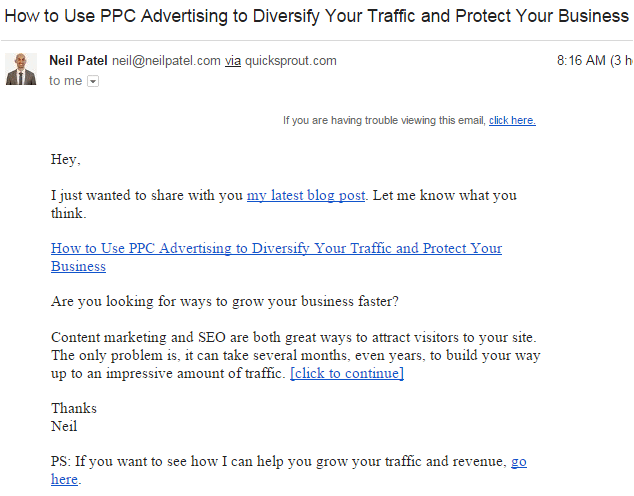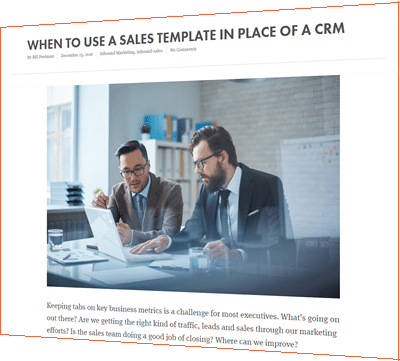 A little etiquette, please!From your company’s point-of-view, lead nurturing is all about building relationships of trust and authority. However, from the prospect’s point-of-view, she is engaging with your company because you’re sending her the right information (to help her solve her problem) at the right time.
A little etiquette, please!From your company’s point-of-view, lead nurturing is all about building relationships of trust and authority. However, from the prospect’s point-of-view, she is engaging with your company because you’re sending her the right information (to help her solve her problem) at the right time.
While these two views of lead nurturing aren’t antithetical, there is clearly a thin line of appropriate lead nurturing behavior that needs to be maintained.
79% of marketing leads never convert into sales. Poor lead nurturing is a common cause of this poor performance (MarketingSherpa).
Poorly written emails, mass-produced messaging, and a lack of genuine thought and interest throughout your communication are all sure ways to alienate the recipient. Avoid these issues with the following email etiquette tips to help your high quality leads move down your sales funnel.
1. Get personal
Just as no two snowflakes are alike, you shouldn’t expect all your leads to be the same. According to the Custom Content Council, 61% of consumers say they feel better about a company that delivers custom content and are also more likely to buy from that company. Providing content that doesn’t match a persona or where your lead currently is in the buyer’s journey increases disengagement. Make sure you provide content that speaks to your personas and where they stand in the buyer’s journey.
Addressing your email to the recipient’s first name creates a sense of familiarity and makes the reader feel like it’s actually meant for them and you’re paying attention. And, according to the 2014 Science of Email Report, having that first name personalization increases your click-through rate from about 5.8% to about 7%.
Personalization can extend far beyond the use of names, too. Some things that you can pull in to your emails for a more relevant and personal experience include their role or industry, the most recent page on your website they have viewed, and the types of content they have downloaded.
2. Talk (write) like a normal person
Forget the gobbledygook, mumbo-jumbo, and industry jargon — talk like a human being. If I’m having coffee with you, talk to me in plain English. Like a friend, or a trusted adviser. no corporate-speak! After all, the point of lead nurturing is to build a relationship.
Be yourself in the email. Make sure your email comes from a real person, and has a real signature file with a small photo of you. Hey, this is personal! And while you’re working on your email signature, be sure to create it in a way that looks great on smart phone, since mobile accounts for up to 70% of email opens (eMailMonday).
3. Do it now
If you ignore leads, they will go and seek out other options. Forbes has conducted research that indicates that companies do not follow-up with leads quickly enough, in fact the average follow-up time presented in Forbes research was 46 hours and 53 minutes. Do you remember all the websites you visited 2 days ago? Neither do your leads.
Research shows that 35-50% of sales go to the vendor that responds first. (InsideSales.com) ![]()
4. Do it right – follow best practices
Write your lead nurturing campaign based on best practices. Yes, lots of people have done this before you, and there is lots of data about what works and what doesn’t.
First impressions are crucial in relationships. When sending emails, you only get one chance to get this impression right — and the best way to make it a good one is to optimize your email subject line. Research shows that “secrets” is the most clicked word in lead nurturing subject lines, so testing to find out what works for your audience is key to getting your email recipients to click through to all the good stuff on your website.
Positioning your email’s content as something of value and interest is the best way to draw your audience in. Free tools like the Subject Line Checker from Litmus will help you gauge which email subject lines will be more successful.
5. Always provide value
Don’t focus on the end result (the sale); focus on providing real value to that prospect. By placing emphasis on creating value for your leads with relevant content and education during the early email communication process, you will help foster a mutually beneficial relationship and lay the groundwork for a more successful close.
6. Keep it responsive
In this day and age, and with 80.8% of users reading email on mobile devices, there is absolutely no excuse for not optimizing your emails for mobile access. Having to twist, pinch, swivel, and zoom in order to awkwardly read the contents of an email is a chore, and a very irritating one at that.
7. Brevity is the spice of life
Well, it certainly is when it comes to email. I have a friend who’s a retired litigator, and his emails read like his closing arguments. Don’t write like him! Keep your emails short and to the point. Include an image if it’s appropriate.
Neil Patel’s emails are always short, with three links to his piece of content and one more general link:

Poorly written emails, mass-produced messaging, and a lack of genuine thought and interest throughout your communication are all sure ways to alienate the recipient. On the other hand, following the above etiquette tips will re-shape your lead nurturing emails to produce high quality leads.





